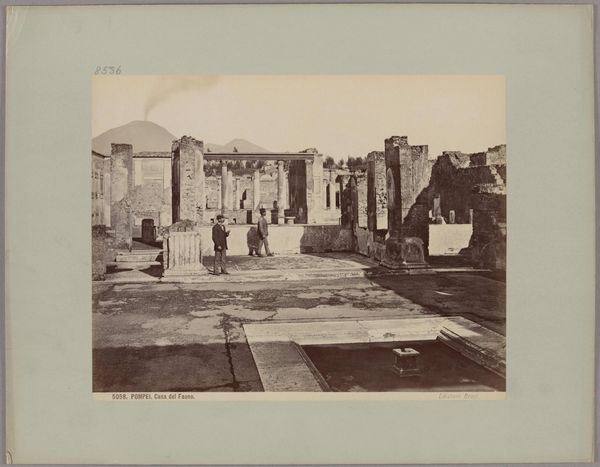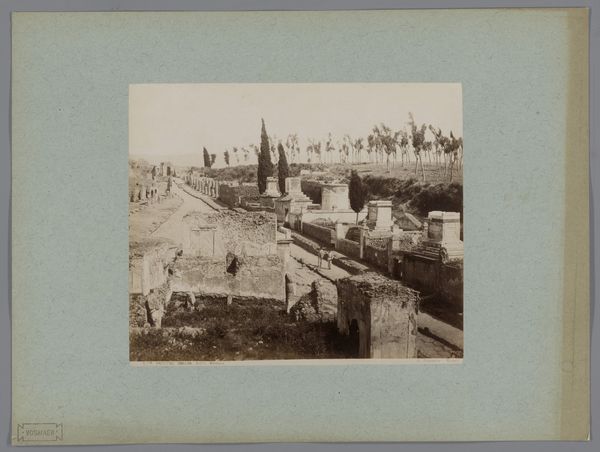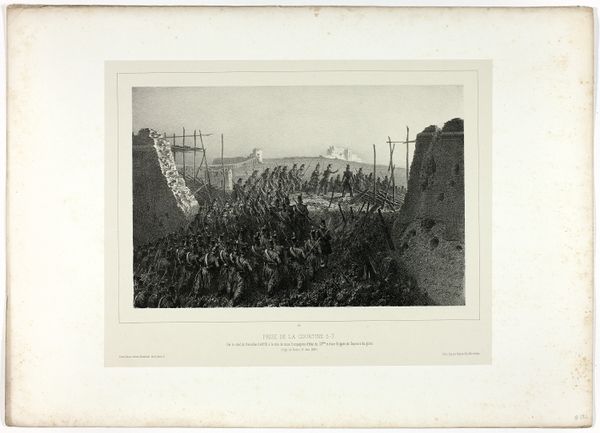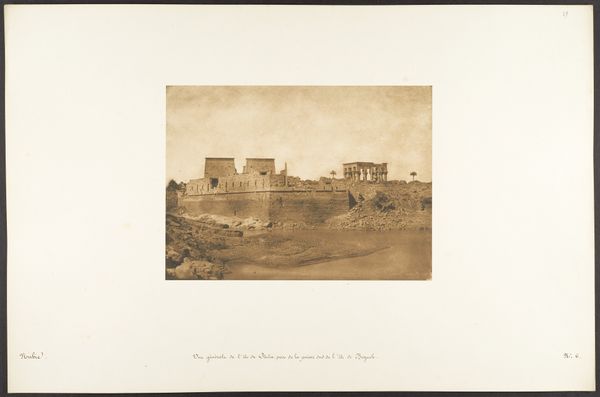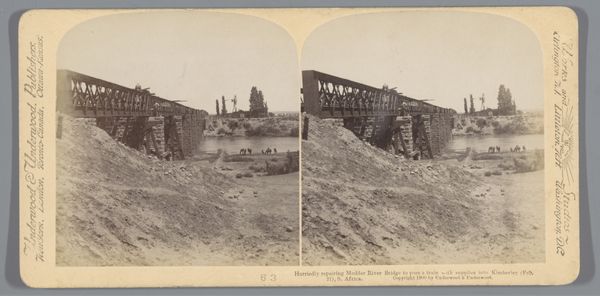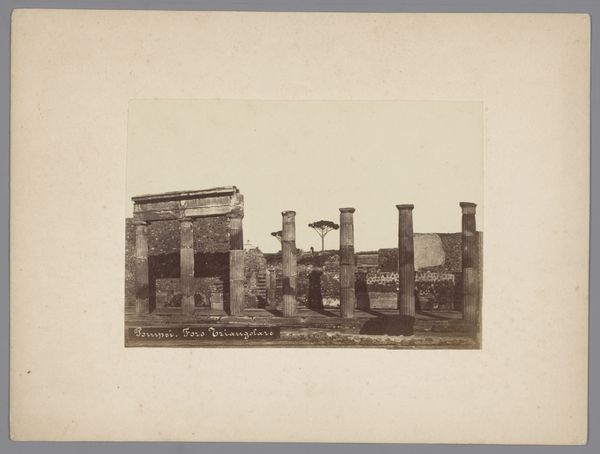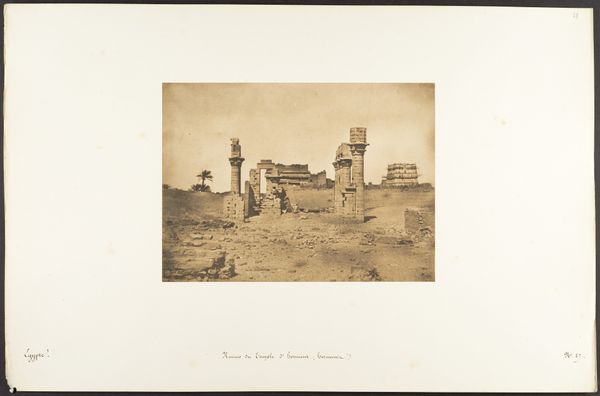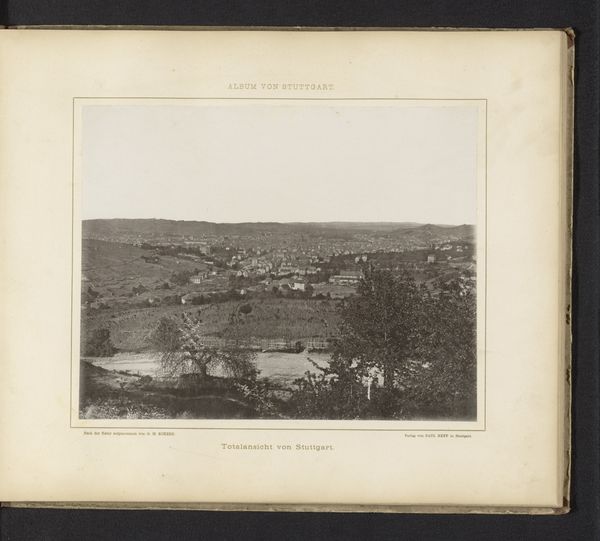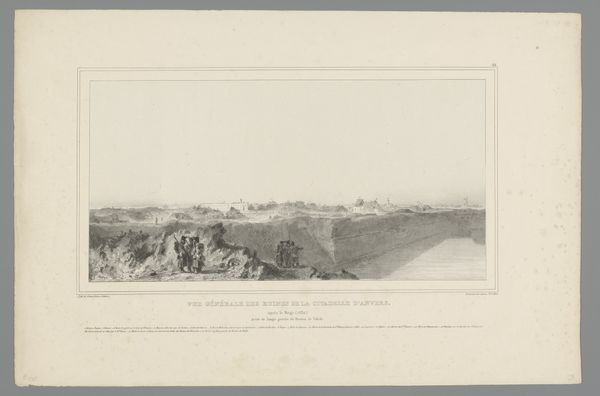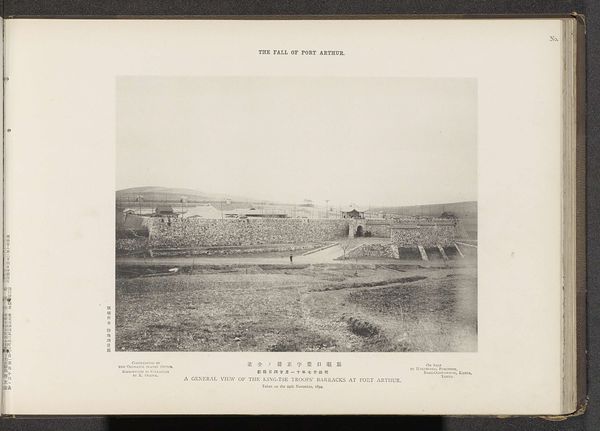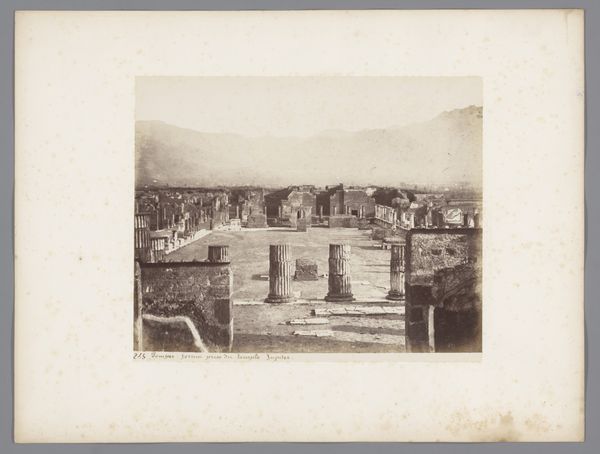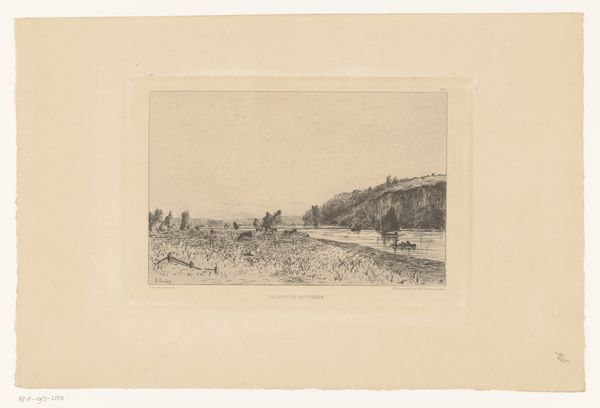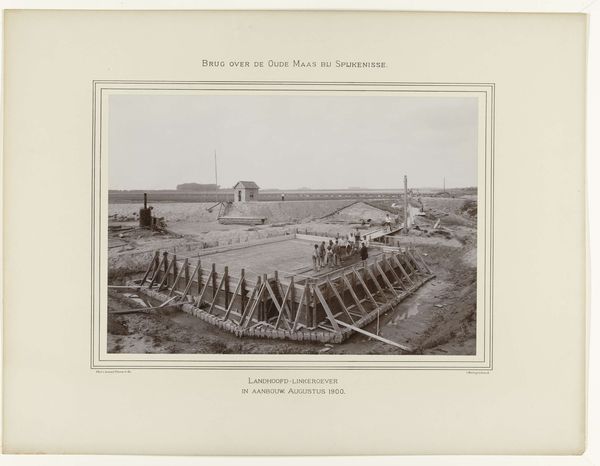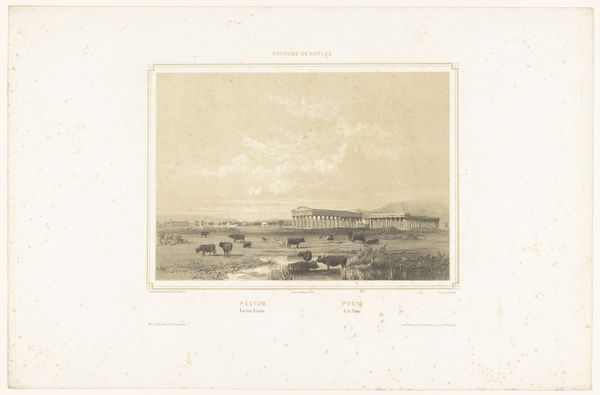
photography, albumen-print
#
war
#
landscape
#
photography
#
soldier
#
ashcan-school
#
history-painting
#
albumen-print
Dimensions: Image: 7 5/16 × 9 1/4 in. (18.6 × 23.5 cm) Mount: 10 5/8 × 13 5/8 in. (27 × 34.6 cm)
Copyright: Public Domain
Curator: Mathew Brady captured this stark albumen print, "Fortifications, Manassas, Occupied by 13th Mass.," in 1862. What strikes you first about this image? Editor: It feels barren. Almost lifeless, yet busy in a weird way. Those fortifications, built from raw timber, seem flimsy, vulnerable, almost like they’re surrendering to the open plain beyond. Curator: Brady’s photographs played a crucial role in documenting the Civil War, bringing its realities to the home front, often bypassing traditional journalistic illustration. Note how the horizon line emphasizes the landscape, a subtle romantic sensibility in rendering such brutal scenes. Editor: I see that. It’s like a stage set, this carefully constructed…emptiness. It makes me wonder about the photographer’s choice: this specific angle, this distance. There's a deliberate emotional withholding here. The tents in the back looks like origami. It almost does feel romantic until you imagine living in a origami tent at war. Curator: This photograph's strength lies in its objective record, yet that supposed objectivity also constructs a narrative. It highlights how early war photography walked a line between reportage and shaping public perception. This photograph would be displayed to showcase the army in place, prepared to fight and this shaped people’s support for the army. Editor: So the narrative of strength, resilience? Yet to me it's more about how we sanitize trauma, making it digestible through carefully framed compositions. Curator: Indeed. It invites the viewer to engage with the scene while remaining at a remove. Consider its cultural impact; it helped formulate and distribute how people witnessed the civil war and its aftermath in 1862 and onward. Editor: And still now, centuries later, right? It's both an archive and an echo, whispering unease and asking uncomfortable questions about what we choose to see, and how. It definitely asks more than it answers. Curator: It gives us a very realistic image that at first seems to have none of its own thoughts until one is close to it, then its power to teach grows stronger. It may indeed ask questions as a witness does when history remembers an event, perhaps. Editor: Yes, perhaps. Thanks for that.
Comments
No comments
Be the first to comment and join the conversation on the ultimate creative platform.
